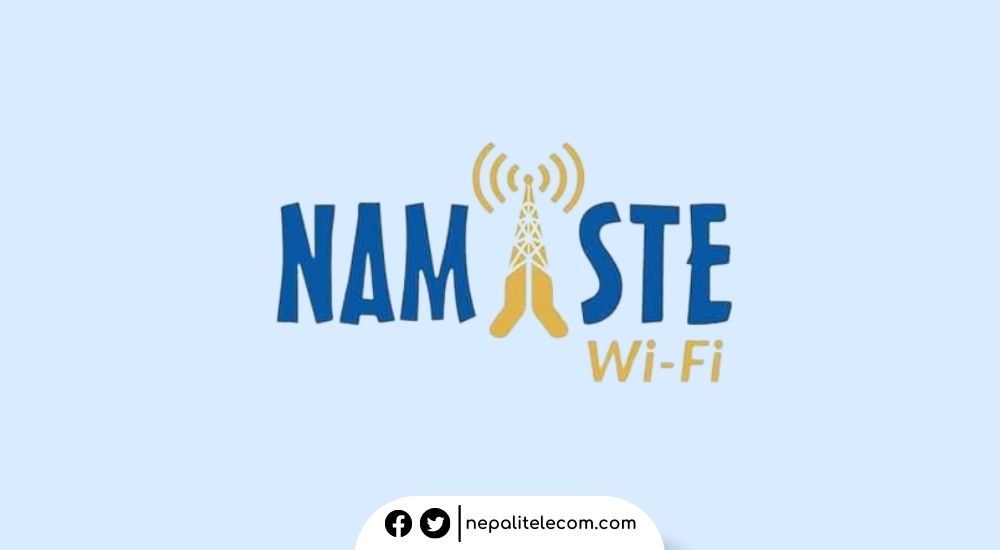The latest audit report by the Office of the Attorney General (OAG) highlights mobile broadband expansion achieving greater results than earlier targets while fiber extension is still crawling. The latest report also shed light on various telecommunication projects in Nepal such as MDMS, 5G trial, TERAMOCS monitoring project, broadband connectivity, data center, etc. Find out what the report says and recommends for the projects’ better implementation.
The achievement of mobile broadband expansion owes to the operators namely- Nepal Telecom (NTC) and Ncell’s active initiatives for remote areas. As per the report, the target for mobile broadband in 2078/79 was to reach 72 percent. However, the country was able to exceed and reach 98.55 percent by the end of the same fiscal year.
As per the data, the optical fiber network is yet to achieve a larger coverage across the country. The government set the target of covering 19,170 km with an optical fiber link. However, the report shows that only 12,224 km of the area has been covered which is far below the target. The difficulty of laying fiber cables in difficult terrain has been an obstacle for service providers.
On the opposite, 4G/LTE service has registered a commendable milestone. As per the report, 58.58 percent of subscribers are on 4G in Nepal exceeding the target of 50 percent for 2078/79. Similarly, Mobile broadband in Nepal has crossed 98 percent with Telephone teledensity reaching 142.87%.
| OAG Report Telecom Sector Progress | Data |
| Optical Fiber Expansion | 12,224 km |
| 4G Usage | 58.58% |
| Fixed Broadband Expansion | 32.18% |
| Mobile Broadband | 98.55% |
| Mobile Telephony Users | 4.2 Crores |
| Internet Access Penetration | 130% |
| Telephone teledensity | 142.87% |
Check out: From eSIM Launch To 5G Trial, MDMS, And New Telecom ByLaw, Major Telecom Highlights Of 2079 In Nepal
OAG report 2079 BS:
FTTH service expansion:
Fiber-to-the-Home (FTTH) fiber internet service remains behind mobile broadband service. The OAG report 2078/79 shows that the target of covering 200 cities and developing areas could not attain the target as only 85 of those areas were connected by the fiber connection.

Related: Fiber Internet Users In Nepal Among The ISPs | In Numbers
Paperless governance
The government also aimed for paperless governance at 20 offices inside Sighadurbar. So far (by FY 2078/79), the initiative has been adopted successfully at 6 offices.
IT service center at every local government
Likewise, the idea of an IT service center at every local level of government has not started despite an agreement with the local bodies.
Digital Nepal Framework’s slow progress
The government has adopted the Digital Nepal Framework guidelines for the digital transformation of the country. However, the OAG 2079 report concludes that the plan lacks the right coordination for its implementation. It is stated that concerned bodies have displayed a lack of accountability and suffer from ownership to have a meaningful influence. The report suggests that all the related bodies must coordinate and achieve the desired results in all sector
Frequency revenues.

Frequency and royalty revenues
The government collected 3 billion, 38 crores, 56 lakhs, and 36 thousand in frequency charges. It is a decrease of 5 percent from last FY 2077/79. In the meantime, 3 billion, 55 crores, 1 lakh, and 31 thousand came from the royalty fees.
Online government service
The government has introduced online services to deliver government services in a timely and efficient manner. Under the concept of paperless governance, 45 types of services are being provided online such as electronic passports, unified tax system, foreign employment permission, driving license application and renewal, educational character certificate, etc.
The OAG believes that online services remain very distinct from each other which could make interoperability very difficult in the future.
Do read: Nagarik App Launched, Will Integrate All Government Services : Find New Upgrades
TERAMOCS monitoring project
On 2074-06-20, the procurement work was started with an estimate of USD 32,390,000 for TERAMOCS (Telecommunications Traffic Monitoring and Fraud Control System). The system is being brought in to asses, regulate, and protect consumer rights of mobile, telephone, and internet services. The Expression of Interest (EoI) asked for a list of 4 consultants who attained over 70 marks. But a company that attained the score and submitted interest with USD 23,770,000 had passed the requirement making the competition limited and it led to the cancellation of the purchase of the system on 2076-0129. Regarding it, the Supreme Court has ordered the procurement process to be implemented as per the prevalent laws.
Despite consultants being in agreement with the terms and conditions of NTA for the system, and willing to complete the work in 6 months, the infrastructure has not been set up yet. The agreement to complete the installation of the system was made on 2081024.
The report also states that due to the regulator not taking into account the consultant, while approving the project, the cost seemed unrealistic. The report asks the concerned officials to be accountable for this.
MDMS implementation
On 2076-0317, an agreement was reached with an international consultant for a primary site container and the equipment to be used in it such as 7 server switch routers, secondary data center equipment server switch rack, MDMS, supply, installation, commissioning, and operation Mobile Device Management System (MDMS). Of the agreed amount of USD 7,066,888, so far, USD 1411178 has been paid.

But the work has not been completed in its scheduled time and on several occasions, the deadline was fixed at 2078-07-15. Still, hardware purchase and installation works have not been completed. The office recommends that for the delay, fines must be slapped on the consultant as per the pre-agreement and the work completed.
Broadband connectivity
By Ashar 2079, 73 percent population, and by Falgun 2079, 738 local bodies (6,190 ward offices) have broadband internet. That is still one-third of the population, 15 local levels, and 753 wards remain out of internet service. The OAG report 2079 highlights that the government must connect all the local levels and the population and start digital literacy programs.
Green telecommunication
In 2022, Nepal Telecommunication Authority (NTA) reached an agreement with a consultant to prepare a regulatory framework for green telecommunication service. The idea is to promote green telecom services in Nepal’s infrastructure development to play a role in global climate change and its effects. The report instructs that Nepal should intend at developing a telecom infra and network suitable to Nepal. It further calls for making telecom networks programable to reduce carbon footprint and use newer technologies.
5G trial
The world states have started upgrading the 4G LTE network to 5G. NTA allocated 2600 MHz band frequency with 60 MHz spectrum to Ntc on 2078-08-06 for a year for the pilot trial. Ntc has started an internal 5G trial but as the report states the operator has not submitted its trial report to the regulator. The OAG suggests that since current 3G and 4G networks are to be upgraded to 5G, a roadmap or a regulatory structure must be coordinated for a swift transition to next-generation mobile technology.
4G is yet to reach the hilly region
Despite 4G users growing in percentage, there’s still room for expansion. The report mentions that still only 72 percent of Nepalese are connected to 3G or 4G and worse, the service has not penetrated well in remote hilly areas. Ntc has identified 437 towers to start service in the low coverage region. The plan is to go ahead in 3 packages.

Do read: Nepal’s Per Month Smartphone Mobile Data Traffic to Increase by 2.2 Times- GSMA Predicts
Data center in Lalitpur
The plan for the construction of the data center and an internet exchange center in Lalitpur has not gone to plan. Likewise, the plan for a Gyan IT park in Khumaltar across 118 ropani lands has also not started. The office suggests that the government should give these plans priority and work on them.
Do read: Ncell Builds a Tier 3 Data Center in Nakkhu, Cost Rs 2 Billion
You can download the latest OAG report 2079 here.












